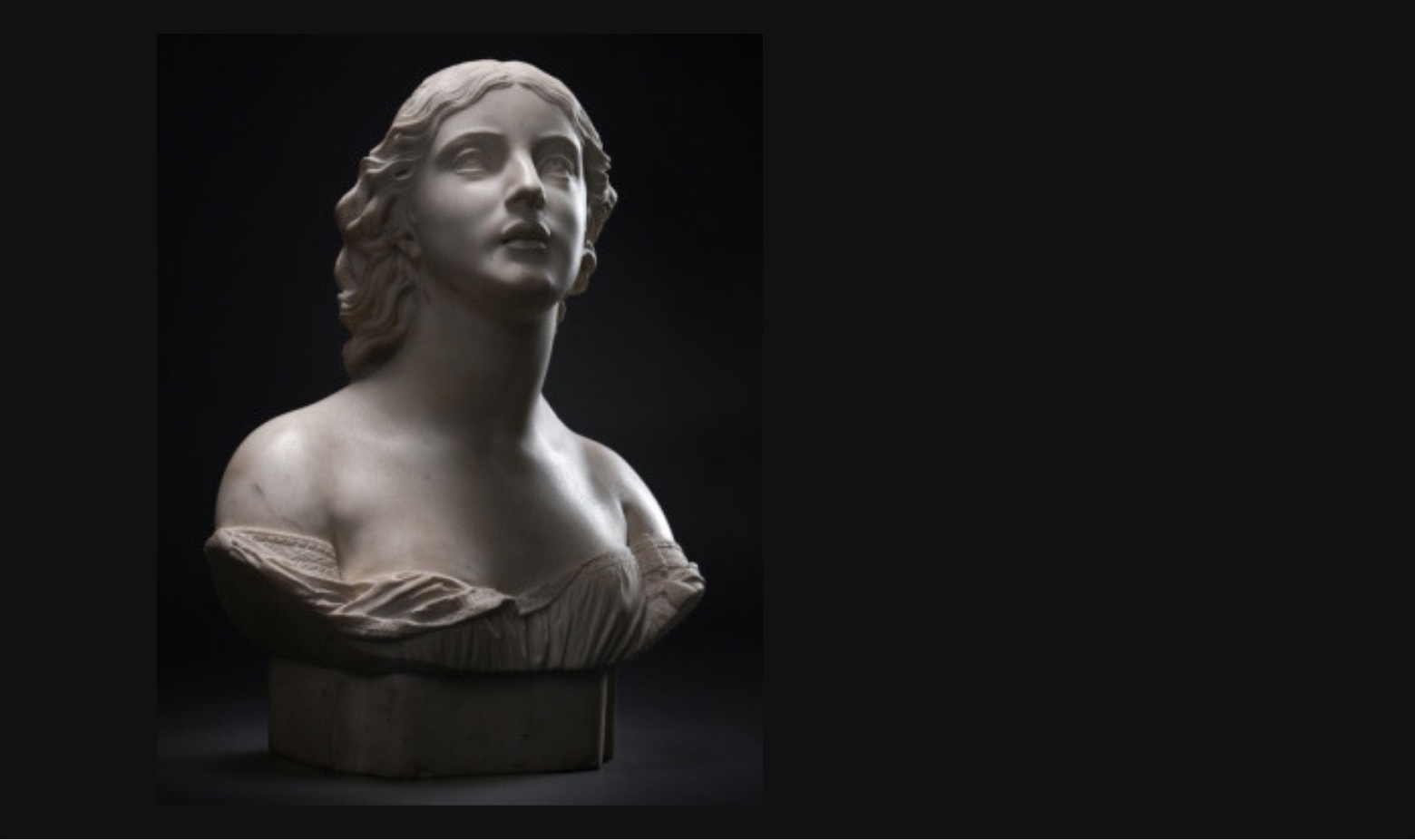#Amelia #Robertson #Hill #bust #beats #estimate #Antique #Collecting

A marble bust by eminent Scottish sculptor Amelia Robertson Hill (1821-1904) (née Paton), set a new record for the artist recently in Dreweatts’ Fine Furniture, Sculpture, Carpets, Ceramics and Works of Art sale.
The 1860 bust, which portrays a young woman in a classical style low cut wrap, with her head tilted wistfully up to her right, sold for £22,680 against an estimate of £12,000-£18,000. The sale saw competitive bidding for the 1860 bust, in the room, on the telephones and internet from around the globe, finally selling out to an internet buyer in Australia.

Amelia’s works can be seen on public display across Scotland. They include the statue of Robert Burns in Dumfries and the statue of David Livingstone in East Princes Street Gardens, Edinburgh, Scotland. Amelia also contributed two figures to the magnificent Scott Monument, which also stands in East Princes Street, Edinburgh and was commissioned in tribute to the Scottish author Sir Walter Scott (1771-1832).
Commenting on the record price achieved for the bust, Silas Currie, Head of Dreweatts British and European Sculpture and Works of Art department, said: “We are thrilled with the result of this remarkable bust, which set a new auction record for this neglected Victorian female artist. Only a few works Amelia Robertson Hill have come to auction, with half of them being her portrait miniatures, so it was a privilege to be able to offer it for sale and a delight to see her works finally attaining the recognition that they deserve.”
Famed for her creation of spectacular sculptural works throughout the 19th century, Scottish-born Amelia Hill (née Paton) grew up in Wooers’ Alley Cottage, Dunfermline in Fife, in a very creative family. She was the daughter of famed damask designer Joseph Neil Paton (1797–1874), whose designs are still in the Victoria & Albert Museum collection today. Her brothers, Waller Hugh Paton (1828-1895) and Joseph Noel Paton (1821-1901) attained world-wide acclaim as artists, with a clientele that boasted royalty and aristocracy. Amelia’s brother Joseph Noel Paton was Queen Victoria’s ‘Painter and Portraitist for Scotland’, the artists’ equivalent of poet laureate and had important artistic links to the Pre-Raphaelite circle. Well known for mythological and religious subjects, his work was displayed in major galleries throughout Scotland.
Amelia‘s first foray into art was creating small miniature portraits and clay modelling with rudimentary tools, such as an ivory crochet-needle and a knife, until she went on to train professionally under the Scottish sculptor William Brodie (1815-1881), following her mother’s death and her father’s remarriage. She moved in with her famous brothers (at 33, George Square, Edinburgh) and soon became an accomplished sculptor in her own right, establishing her own studio. In 1862 she married the artist and renowned early Scottish photographer David Octavius Hill (1802-1870) and they lived at his studio at Rock House on Calton Hill, Edinburgh. Amelia went on to exhibit over 60 sculptures at the Royal Scottish Academy, the Royal Academy, Glasgow Institute, the Royal Hibernian Academy and at the International Exhibition in Dublin in 1865.
Her work comprised predominantly of studies of Arthurian and Shakespearean heroes, family friends and notable figures such as the historian Thomas Carlyle (1795-1881), artist Sir George Harvey (1806-1876) and physicist Sir David Brewster (1781-1868). Her talent was evident and resulted in commissions for several public statues, which was extremely rare for a female artist in this period. Her husband’s faith in her undeniable skills, alongside the support of her brothers, led to her accepting the commission of a full-length statue of the great explorer David Livingstone (1813-1873), who sat for her during the modelling phase of the work in 1868/1869, before his departure in 1840 to Africa. Exhibited to great acclaim in London in the New Rooms of the Royal Academy in 1869, the figure now stands in Princes Street Gardens, Edinburgh and was described by William Sharp in 1902 as the “the first work of sculpture done by a woman which has been erected in any public place in Britain.” Subsequent public commissions included the statue of Scottish poet and lyricist Robert Burns (1759-1796), commissioned by Dumfries town council in 1877 and three of the statues that embellish the Scott Monument in Princes Street Gardens, Edinburgh.
Despite the patronage of two eminent brothers and her husband, Amelia still faced the constraints of Victorian attitudes at the time, towards gender equality and was excluded from full membership of the Royal Scottish Academy. In light of this, she helped to establish the Albert Institute of Fine Arts at Edinburgh’s Shandwick Place in 1877, which was an artistic institution that did not discriminate on grounds of gender. Above the ornate doorway to the building Amelia’s relief portrait bust of Prince Albert and the figures of ‘Sculpture and Painting’ can still be seen.
The 1891 census describes Hill as ‘sculptor, retired’ but Amelia exhibited at the Royal Scottish Academy until 1902, aged 82. She died at home at Newington Lodge, 38 Mayfield Terrace, Edinburgh on July 5th 1904, aged 83. She was buried next to her husband in Dean Cemetery, Edinburgh beneath a sculpture of him that she had sculpted for his grave 34 years earlier.



